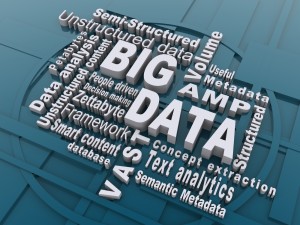Missing out on Meeting Data?
Big Data has taken the world by storm. You don’t have to look far to find evidence of its impact on our lives. Chances are you have shopped on Amazon at some point in the past. If so then you have probably gotten the emails from Amazon with recommendations for other products. These recommendations are the result of analyzing massive amounts of purchase transaction data and identifying correlations between products.
Amazon lets the data speak for itself and uses the results of their data analysis to drive future sales by suggesting products that are highly correlated with the products you have already purchased. I just gave away Amazon’s secret sauce. It is data and lots of it and they are not the only ones using data for some pretty interesting purposes. 

Become The Change Meetings Need!
So you may be wondering what Big Data has to do with meetings. Arguably there are probably not many organizations that capture and store large amounts of information related to meetings but that is about to change and it will be a change that will significantly improve the way we run our meetings and thus the projects that our meetings support.
Projects come in all shapes and sizes but the one thing that they all have in common is meetings. Meetings are used within projects for activities like status reporting, brainstorming, making decisions, or communicating important ideas. These meetings give birth to lots of data that if captured and operationalized can provide incredible insights into project performance. Let’s paint the picture a little more vividly using an example.
What Is Meeting Data?
Let’s imagine that on one of your projects you have been conducting several (3) meetings a week for a one-year period. At three (3) meetings per week for a year that would be 156 meetings. Let’s say for each meeting you capture data such as date/time of the meeting, meeting duration, attendees invited, actual attendance, objectives, objectives achieved, agenda items, agenda items completed, keynotes, decisions, action items, issues, risks, and status and date completed information for action items, issues, and risks.
At the end of one year, you would have a significant amount of data related to your meetings and that data can be analyzed to help gain insights into the performance of those meetings.
Leverage Meeting Data For Performance Insight
This data, properly analyzed, would allow you to answer some insightful questions about your meetings and provide insight into the health of your project.
For example, you might want to know:
- What is the average attendance % for my meetings?
- How many personal hours have we invested in meetings this year?
- Are my meetings decision-oriented (# of decisions made), action-oriented (# of action items assigned) or strictly informational (# of keynotes captured)?
- How many action items assigned during meetings were completed on time?
- How many action items assigned during meetings are overdue?
- Who owns action items that are overdue? Is there one person or several people that are dropping the ball most frequently?
Gain Meeting Management Control
These are just some of the more obvious questions that a project manager might want to know about their project meetings. There are many ways to analyze the data to gain insights into meeting performance.
We encourage you to start capturing and using your meeting data in a single repository so that you can answer these and many more important questions about your meeting performance. MeetingResult can provide the tools and framework to allow you to easily start doing this today.
Find out why you should Prune Those Meetings!


